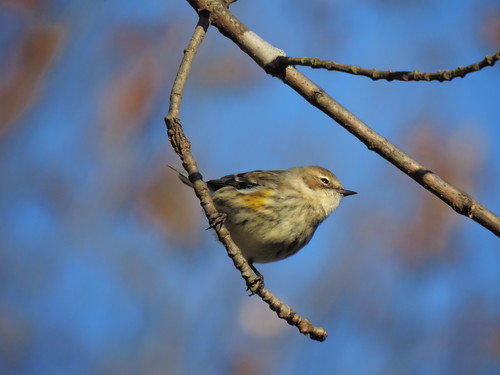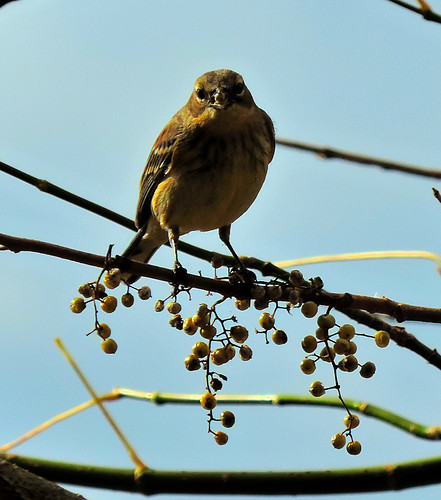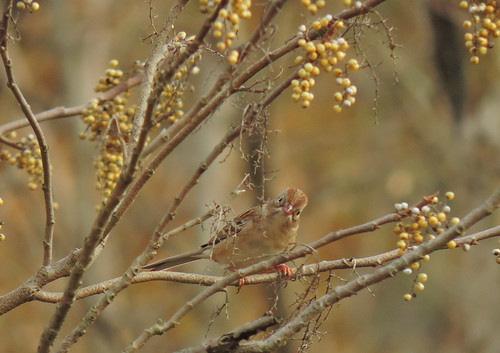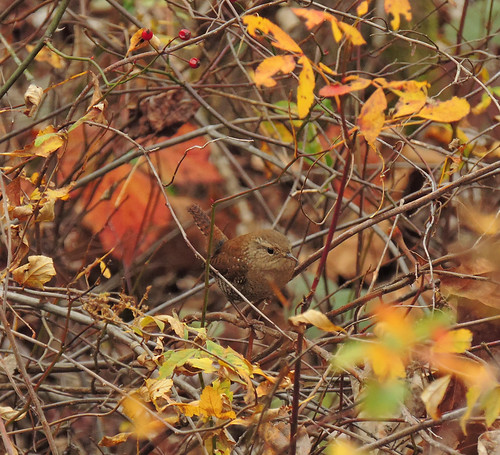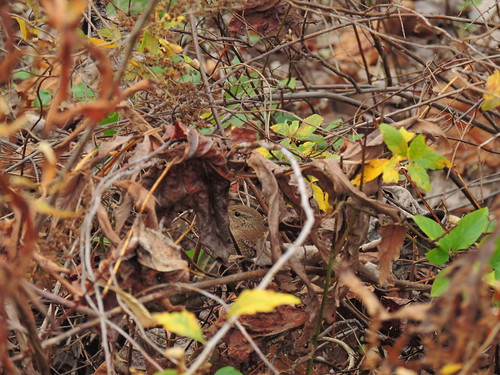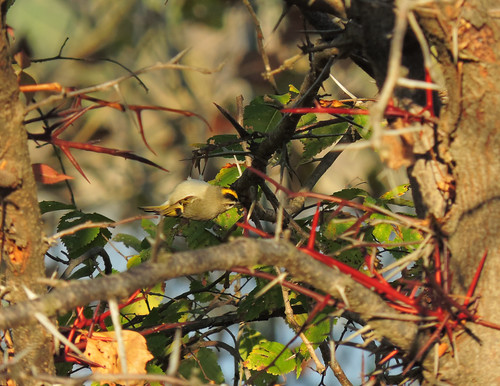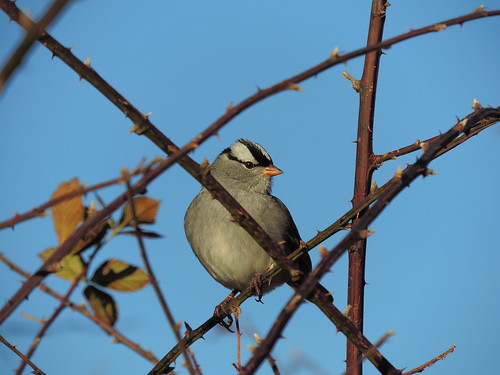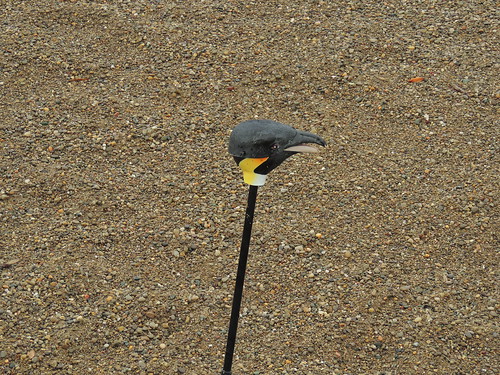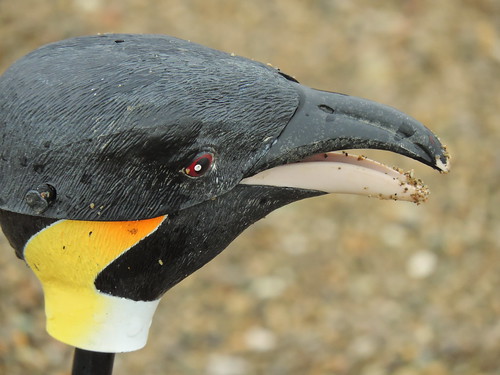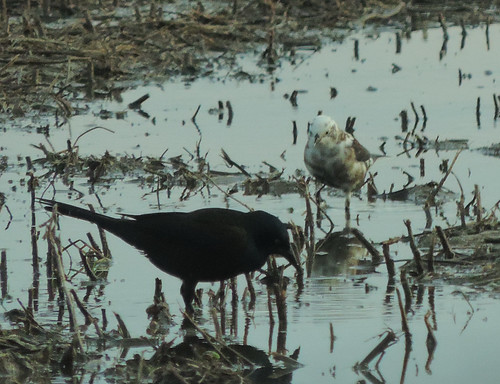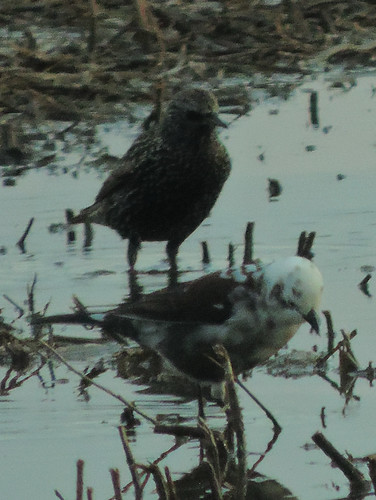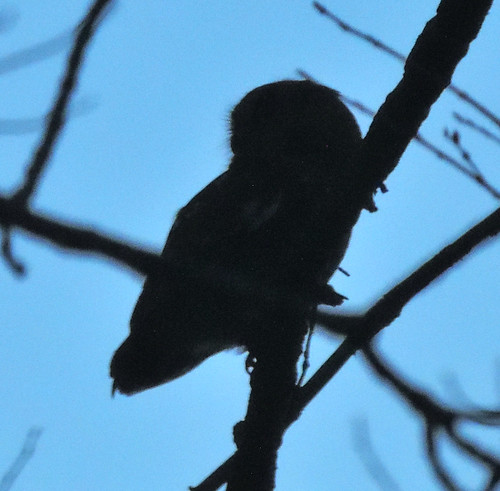I love the seashore and beach most of the year. I am not too keen
about the seashore during the summer when the sun is melanoma producing,
and the sand is littered with debris that has drifted from inland and
is scattered in nearly naked lumps all over the place. But in the fall,
winter, and spring that debris has been gathered up and returned to its
city scape. Then the seashore beach is in its elemental form. The
rising and falling tides stir the sands, smoothing them at the water’s
edge, constantly reshaping the sandbars and dunes, and often casting up
the ocean’s debris.
 |
| Sanderlings (and a few Dunlin) |
In
late October, I walked some beaches in Cape May, New Jersey. The low
sun of the waning day glared off the placid waves. My long shadow
preceded me as I walked slowly along the wet sand, just out of the
water’s reach. Another lone walker was far ahead, apparently more intent
on exercise than I was; her pace widened the distance between us. I
allowed the distance to grow greater as I stopped and watched tiny white
shorebirds chasing the waves.
 |
| Sanderlings run from the waves |
Their
legs were a blur as they ran up the sand ahead of the waves. Then they
reversed direction to chase the water as it receded - back and forth,
like school yard children playing tag - or teasing a playful dog on a
leash. The birds I watched were Sanderlings, and they are one of the
reasons I love the beach along the seashore.
Sanderlings
are common along our seacoasts except from mid-June to mid-July. During
that period they are north of the Arctic circle, breeding. They waste
little time in that task and are soon back along our coasts, chasing the
waves. If you see a sandpiper on a sandy beach going back and forth
with the water, barely getting its feet wet, you are seeing a
Sanderling.
Audubon knew this bird as the Sanderling
Sandpiper. Somewhere along the line, the mavens of nomenclature decided
this was redundant, and dropped “sandpiper” from its name. But the
Sanderling is arguably the only “true” sandpiper.
 |
| Sanderling - "birds that peep on the sand" |
The
“piper” part of “sandpiper” seems to come from a word meaning “chirp,”
or “peep,” hence sandpipers are “birds that chirp on the sand,” or “peep
on the sand.” The Sanderling and its closest relatives (in the genus
Calidris) are known among bird watchers as “peeps.”
The
Sanderling (meaning “little bird of the sand”) is the only sandpiper
which you will regularly find on sand - or sandy beaches. I went through
the Kaufman guide for the habitats where we are most likely to see
other Calidris sandpipers. Here’s what I found:
Least Sandpiper - edges of rivers, ponds, marshes
Semipalmated Sandpiper - mudflats
Western Sandpiper - open flats
Pectoral Sandpiper - grassy mudflats, flooded fields (the “grasspiper”)
White-rumped Sandpiper - flooded fields, marshy edges of mudflats
Baird’s Sandpiper - grassy mudflats, flooded fields
Buff-breasted Sandpiper - short-grass plains, plowed fields
Dunlin - mudflats
Red Knot - tidal flats, sandy beaches
Purple Sandpiper - rocky coastlines, jetties
Spotted and Solitary Sandpiper (not genus Calidris) - along creeks and ponds
Most
of these sandpipers will rest and sleep on sandy flats. On northbound
migration, they feed on horseshoe crab eggs buried in the sandy beaches
of the Delaware Bay. But their usual, preferred place for foraging, and
where they are most often seen by the watchers of shorebirds, is not the
sandy beach. Most would be more accurately termed “mudpipers.” But
don’t expect any name changes in the near, or even distant, future.
There is no requirement for accuracy in a common bird name.
The
Sanderling is the exception. The Sanderling is a bird of the sand. It
sleeps on sandy flats and forages at water’s edge on sandy beaches. It
is a true “bird on the sand that peeps.”
The
Sanderling is common, and it is very tempting to see it along a sandy
beach - say to oneself, “Sanderling,” and go on to look for something
else. But they merit leisurely watching. I stood watching them as the
waves broke, spray flying. They were masters of timing - probing the
sand, then nimbly running up the slope ahead of the water - then racing
the water back down to grab new morsels stirred by the water’s action.
I
watched a dozen Sanderlings probing wet sand where the tide had ebbed.
Something sent them flying further down the beach. I walked closer to
where they had been probing. Tiny little holes dotted the wet sand, an
inch apart in random lines. My feet barely left a mark on the hard, wet
surface. The tiny feet of the Sanderlings left no mark at all. Had I not
been watching, this series of holes in the sand would have posed a
mystery, causing me to wonder what could have caused these neat, uniform
holes in the sand. But I had seen the Sanderlings.
 |
Foreground: Sanderling in breeding plumage in May
Background: Ruddy Turnstone |
|
Most of the year when we encounter Sanderlings, we
see them in winter plumage. Then they are white, or gray-white, pale and
chunky little birds. In Spring they molt into breeding plumage, briefly
sporting a rich, reddish brown on head and foreparts. The times of
transition from one plumage to the next present an array of in-between
appearances. But whatever the plumage, Sanderlings are most likely to be
on the sandy beach chasing the receding waters and speeding from the
incoming waves.
On that Cape May beach, the Sanderlings
were frenetic in their feeding, but fairly calm with my presence. By
slow degrees, I inched closer. I could see them probe with open beak,
gulp some tiny delicacy, always mindful of where the water’s edge was,
whether to hurry toward the ocean or away from it.
 |
| Merlin |
And
then suddenly, the flock took flight. In an instant, sixty birds
disappeared over the dunes. In the corner of my eye, I saw a dark form.
Almost as quickly as I could lift my binoculars, the dark form had also
disappeared beyond the dunes. I could only get a feel of pointed wings,
but it was enough. Sanderlings were foraging along the shoreline in the
late afternoon. So was the Merlin. I had watched Sanderlings ingesting
energy against the chilly autumn night. And now I wondered if the
Merlin, a falcon of the north, would also be feeding.
I
can’t choose between the two, and have no right to do so anyway. So I
wished the Sanderlings - and the Merlin - good luck and good feeding.
The seashore birding that late October afternoon was very good.
 |
| Sanderlings take flight |
Chris Petrak -
Tails of Birding







.jpg)
.jpg)
.jpg)

.jpg)
.jpg)
.jpg)
.jpg)
.jpg)
